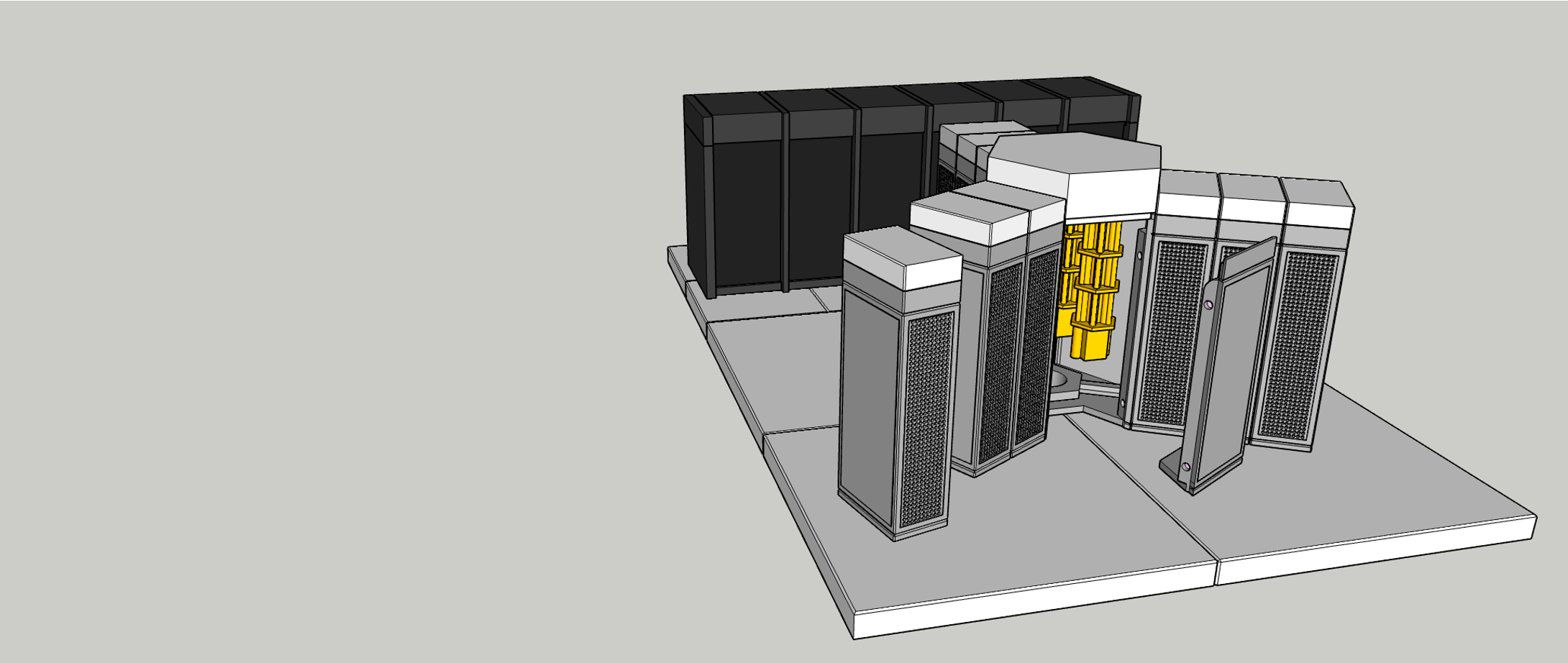RasQberry is a functional model of IBM Quantum System Two. It integrates Qiskit, a Raspberry Pi and a 3D printed model of IBM Q System Two to explore various state-of-the-art technologies and create a tool that can be used for education and in meetings, meetups, demo booths, etc. A spectrum of Quantum Computing demos and Serious Games for Quantum Computing (that illustrate e.g. superposition, interference and entanglement) will be made available on the RasQberry platform for an engaging introduction to Quantum Computing.
Note: If you are looking for the functional model of IBM Quantum System ONE, please go to https://rasqberry.one. Here is the new project, building a functional model of IBM Quantum System TWO, including several additional updates, e.g. 64-bit OS, Raspberry Pi 5, Qiskit 1.x, more Quantum Computing Demos, integration into raspi-config, etc.
Using the Developer Image
Currently, additional functionality (menu, config & code improvements; additional quantum computing demos; etc) is being added to the alpha releases.
Quick instructions for using the alpha releases:
- Download the .xz file in a release (e.g. "image_2025-04-25-rasqberry-two-full.img.xz") to your laptop
- Write the image to SD card with the Pi Imager without any customisations.
- Insert the SD card to your Raspberry Pi (Pi 5 is our standard version; Pi will also be supported in the future), and boot the raspberry.
- Login via ssh. user "rasqberry", PW: "Qiskit1!".
- vnc might not work out of the box. Enable vnc through raspi-config (interface options, VNC, yes), or simply run
sudo raspi-config nonint do_vnc 0 - after login, run
sudo raspi-configand explore the first menu item which let's you access the current version of our demos. Need to have LEDs connected for most of them. - Please report issues in github https://github.com/JanLahmann/RasQberry-Two/issues
Quick Installation of RasQberry using the Raspberry Pi Imager
Quick setup instructions:
Initialize an SD card with Raspberry Pi Imager, using the new RasQberry image based on "bookworm, 64-bit".
Currently (during the beta phase), the image can be found at https://github.com/JanLahmann/RasQberry-Two/releases
Alternatively, some of the images can be accessed with the Raspberry Pi Imager using a custom repository. On a Mac, run the following command in a terminal
/Applications/Raspberry\ Pi\ Imager.app/Contents/MacOS/rpi-imager --repo https://RasQberry.org/RQB-images.json
or on Windows
"C:\Program Files (x86)\Raspberry Pi Imager\rpi-imager.exe" --repo https://RasQberry.org/RQB-images.json
This image includes Qiskit 1.x and several Quantum computing Demos.
Further instructions will be released, soon.
Working with Qiskit
Qiskit is available in the default venv called RQB2. In case this venv is not activated, you can activate with
. /home/rasqberry/RasQberry-Two/venv/RQB2/bin/activate
and list the available Qiskit modules:
(RQB2) rasqberry@raspberrypi:~ $ pip list | grep qiskit
qiskit 2.0.1
qiskit-aer 0.15.1
qiskit-ibm-runtime 0.30.0
qiskit-qasm3-import 0.5.1
Note: This package list is an example as of June 2025. The specific Qiskit packages and versions may change in future RasQberry releases as Qiskit continues to evolve. Use
pip list | grep qiskitin your environment to see the current installed packages.
Building the RasQberry 3D model of IBM Quantum System Two
STL files for a 3D model of IBM Quantum System Two will be available soon at GitHub: JanLahmann/RasQberry-Two-3Dmodel
